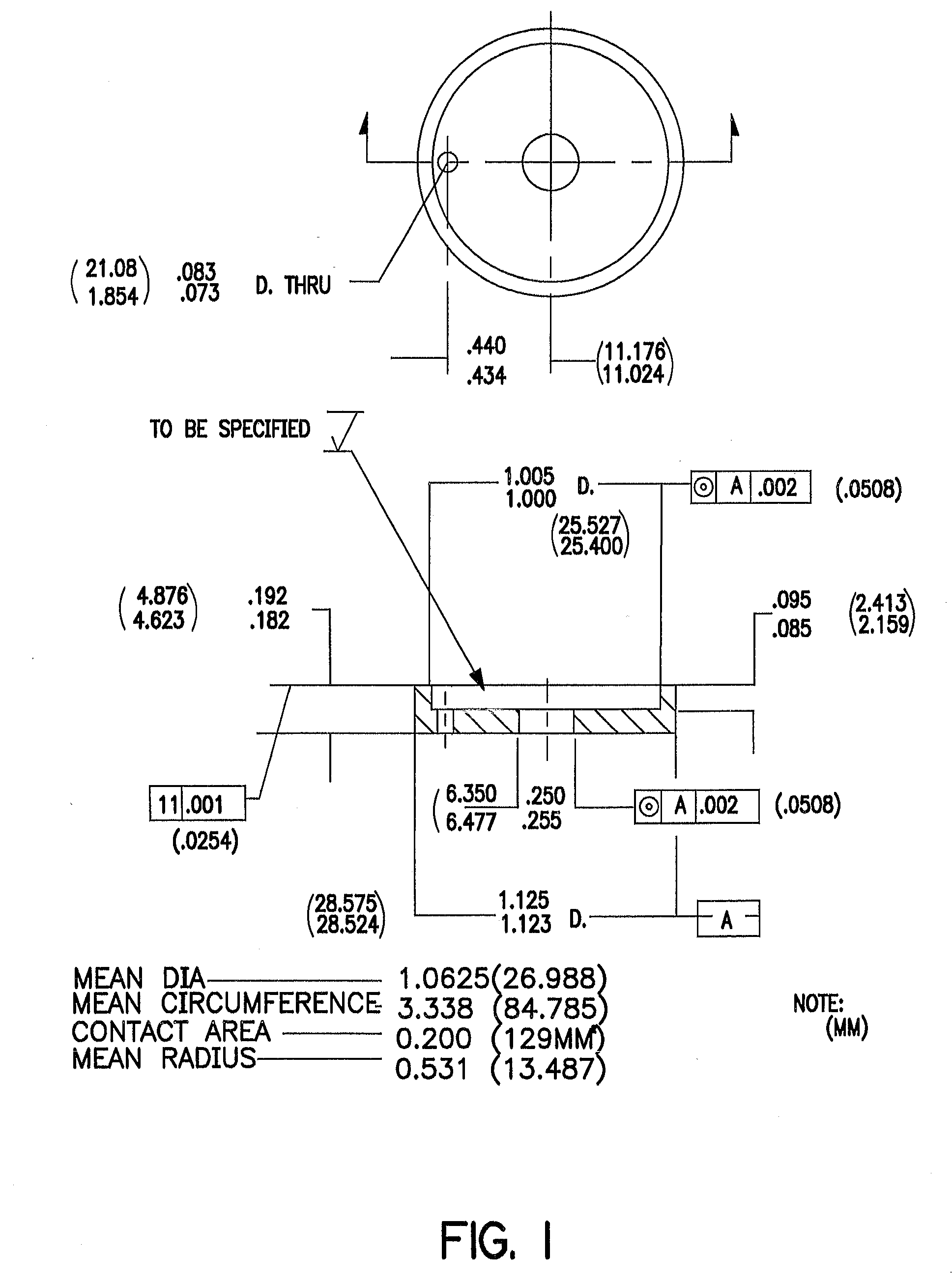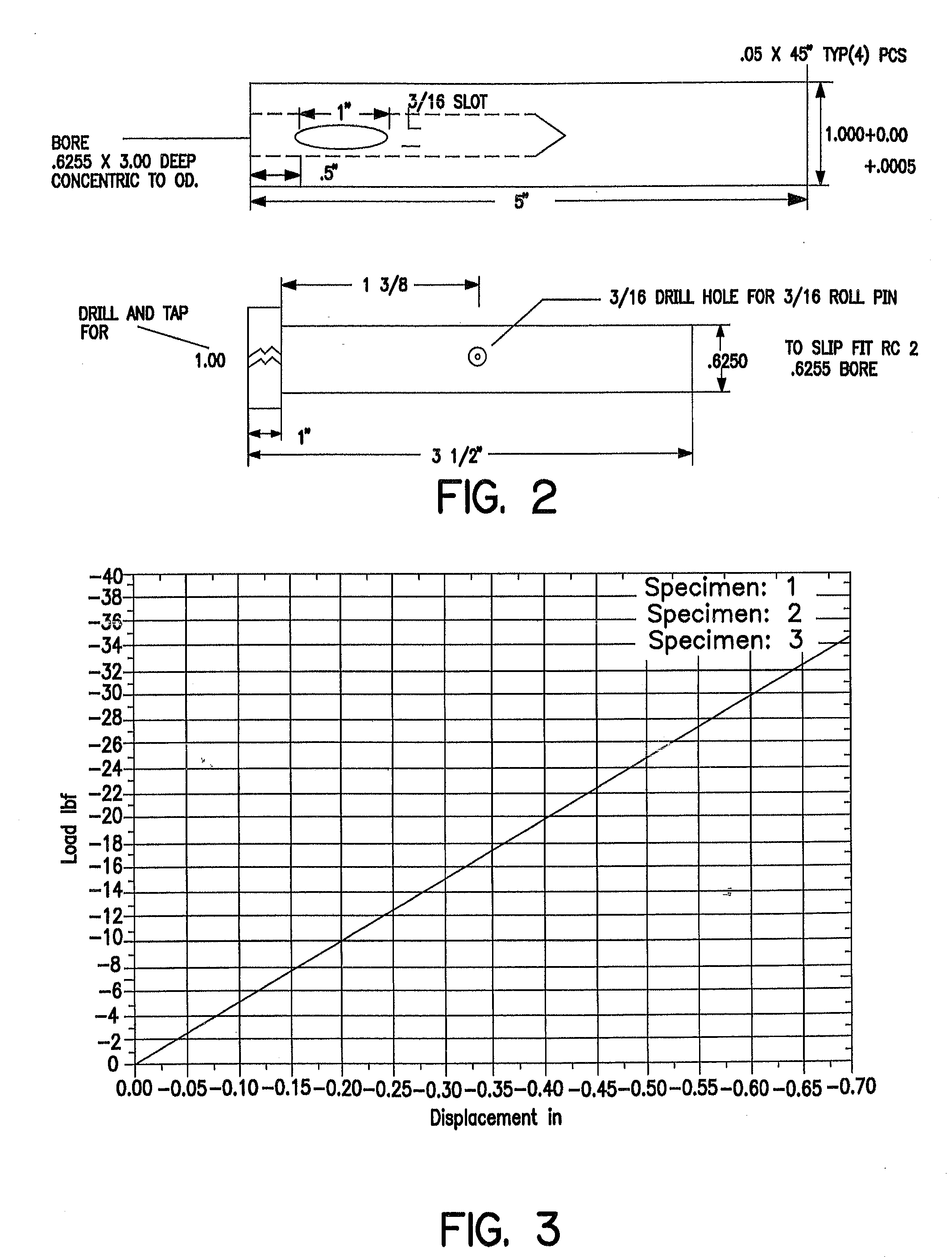Low Friction, Abrasion-Resistant Bearing Materials
a bearing material and low friction technology, applied in the field of improved bearing materials, can solve the problems of poor bonding strength to the substrate of ptfe, poor wear characteristics, and high friction of self-lubricating bearings, and achieve the effects of improving wear resistance, improving cof, and reducing the composite coefficient of friction
- Summary
- Abstract
- Description
- Claims
- Application Information
AI Technical Summary
Benefits of technology
Problems solved by technology
Method used
Image
Examples
example 1
[0052] A sample of ZITEX G-108 porous PTFE sheet material was obtained from Saint-Gobain Performance Plastics (Taunton, Mass.), measuring 0.008 inch thick, and having a density of 1.21 g / cc and an ethanol bubble point of 1.0 psi. The microstructure of this un-imbibed material is shown in FIG. 4.
[0053] The sample was imbibed in the following manner. An epoxy resin composition was formulated with a blend of 56.4% EPON™ SU-3 (Resolution Performance Products), 18.8% EPON™ SU-8 and 24.8% ARADUR® 976-1 (Huntsman Advanced Materials, Basel, Switzerland). The epoxy blend was solvated to a 30% solid solution using MEK as a solvent. The material sample was placed on a 6″ diameter wooden hoop and restrained. The sample was first wetted with 100% MEK solution. The epoxy solution was then applied to the PTFE sample by using a foam brush. The MEK was evaporated and subsequent epoxy solution coatings were applied until the microstructure was filled to a level of 30% by weight (44 volume percent of...
example 2
[0054] A sample of GORE-TEX® expanded PTFE membrane was obtained (W. L. Gore and Associates, Inc., Elkton, Md.) having a thickness of 3.7 mils, a density of 0.42 g / cc, a bubble point of 16.9 psi, and Gurley Number of 13 sec. The sample was imbibed with an epoxy resin as described in Example 1. The amount of epoxy imbibed was 30% by weight (44% by volume). The sample was bonded to a 6 inch by 6 inch carbon steel plate as previously described. FIGS. 5 and 6 are cross-sectional SEM photomicrographs of the structure prior to imbibing and after imbibing and curing, respectively.
example 3
[0055] A sample of the GORE-TEX® expanded PTFE membrane used in Example 2 was obtained (W. L. Gore and Associates, Inc., Elkton, Md.). The sample was imbibed with an epoxy resin as described in Example 1. The amount of epoxy imbibed was 69% by weight (80.3% by volume). The sample was bonded to a 6 inch by 6 inch carbon steel plate as previously described, and subsequently tested for wear resistance. Test results are reported in Table 1.
PUM
| Property | Measurement | Unit |
|---|---|---|
| modulus | aaaaa | aaaaa |
| modulus | aaaaa | aaaaa |
| temperature | aaaaa | aaaaa |
Abstract
Description
Claims
Application Information
 Login to View More
Login to View More - R&D
- Intellectual Property
- Life Sciences
- Materials
- Tech Scout
- Unparalleled Data Quality
- Higher Quality Content
- 60% Fewer Hallucinations
Browse by: Latest US Patents, China's latest patents, Technical Efficacy Thesaurus, Application Domain, Technology Topic, Popular Technical Reports.
© 2025 PatSnap. All rights reserved.Legal|Privacy policy|Modern Slavery Act Transparency Statement|Sitemap|About US| Contact US: help@patsnap.com



